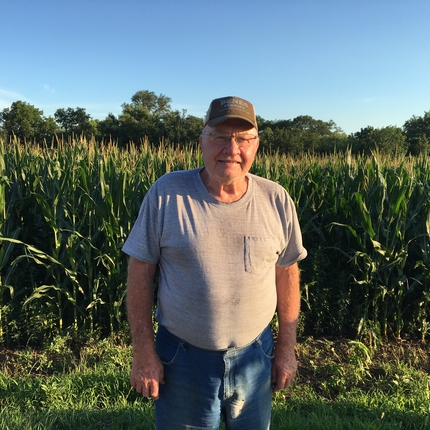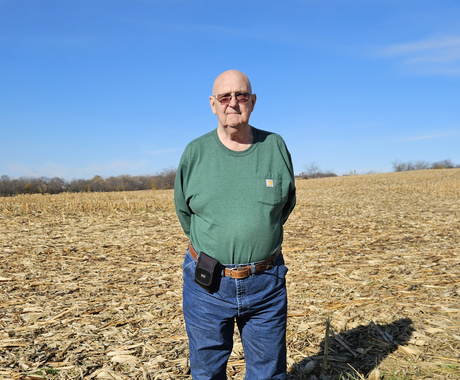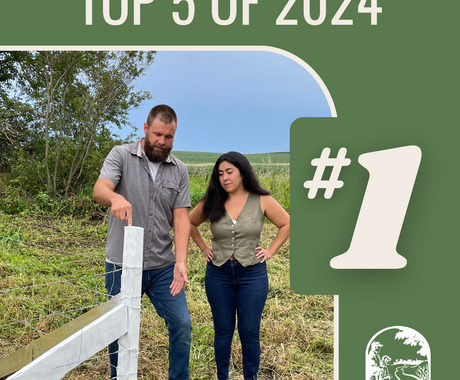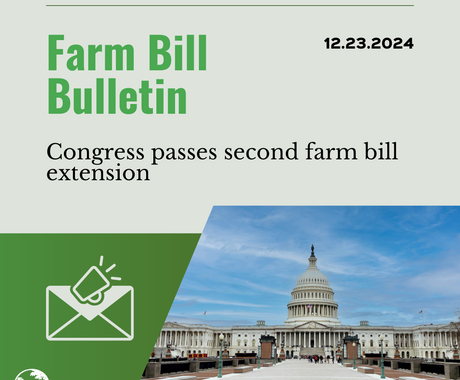By Andrea Hartman, former staff member
When the COVID-19 pandemic spread across the U.S., farmers and ranchers faced financial challenges because of market prices. However, farmers are resilient, and Ron Spicka is no exception.
A lifelong farmer, Ron’s agricultural roots go back generations. His 400-acre farm in Saunders County, Nebraska, is a conventional corn and soybeans operation.
In May, the U.S. Department of Agriculture began offering the Coronavirus Food Assistance Program (CFAP) to farmers and ranchers.
Producers who experienced loss on certain commodities due to changes in market or price decrease were eligible to apply for funding. Payment amounts were based on commodity prices, which meant conventional producers, like Ron, received payments closer to the market value of their crops than did organic or grass-fed producers with higher price points.
“It’s been hard for people to make money during this time,” Ron said.
Farmers and ranchers with all types of operations were struggling: ranchers to get their livestock to meat processors, and local foods farmers could no longer sell to schools, farmers markets, and restaurants. For his farm, Ron was concerned about the price drop for corn, which was tied to the decrease in ethanol production. Low soybean demand had been an issue for even longer, beginning when the international pork industry was hit with COVID-19, and continuing when meat processing and demand in the U.S. decreased.
Ron wasn’t alone in his concern. Midwest farmers and ranchers flocked to CFAP, and it shows in the application numbers.
CFAP opened for applications on May 28, with $16 billion in funding available. Over the course of the first 15 weeks, 541,073 applications were approved for funding. Approval rates have been fairly high for the program. For example, in Nebraska and Iowa, roughly three in four applications were approved for payment.
Though CFAP payments were limited to $250,000 per person, a single farm was allowed up to three shareholders, raising the limitation to $750,000. This decision to offer larger payments to operations with more shareholders was clearly designed to help producers with the largest businesses access historically large payments.
As a result, describing the average payment CFAP recipients received can be difficult. While the program averaged $16,700 nationwide across all categories, livestock and non-specialty producers’ payments averaged approximately $10,000, while specialty crops producers averaged $48,000 and dairy producers averaged nearly $75,000.
High payments for dairy and specialty crop producers might lead one to think the program benefits these producers the most, but this isn’t the case. The application structure made access easier for small livestock and grain producers, resulting in a high number of smaller payments. The application was more difficult for dairy and specialty crop producers, who received far less money from the program overall. As a result, the dairy and specialty crop producers who applied were likely those with large operations and the capacity to devote to the required paperwork. The overwhelming majority of local foods producers were not served by CFAP.
As of Aug. 17, Iowa farmers and ranchers have received the most funding of any state from CFAP for livestock and non-specialty crops. Nebraska was the second and third highest for livestock and non-specialty crops, respectively.
These numbers are consistent with the strengths of the program, which tilted in favor of grain and livestock producers. As a result, fewer of those producers applied for CFAP funds. As of Aug. 17, applications approved for specialty crops from Iowa and Nebraska were less than 20.
Ron applied for CFAP in July, and was approved shortly after. Though he could sympathize with the different challenges local foods producers face, Ron said that he “couldn’t imagine the payment wasn’t helpful to folks” who received it. Small family farms often operate with narrow profit margins, and have increased financial risk, making CFAP payments helpful in aiding cash flow. As for Ron, he noted the payment for soybeans was especially supportive in light of the U.S.-China trade war.
The deadline to apply for CFAP funding has been extended to Sept. 11. Congress continues to debate further measures to support farmers and ranchers during the pandemic.





